Hey all! Real Farmer Jeff here.
In this blog post I will share the 3 main types of garden containers that I use and recommend. Note that I use many types of containers, but these are my favorite ones!
I will also list out the pros and cons of each so that you can determine which container would be best for your situation, whether you have a small apartment balcony, are a homesteader, a beginner, or advanced gardener. There is a garden container for each of those situations!
Let’s get started!
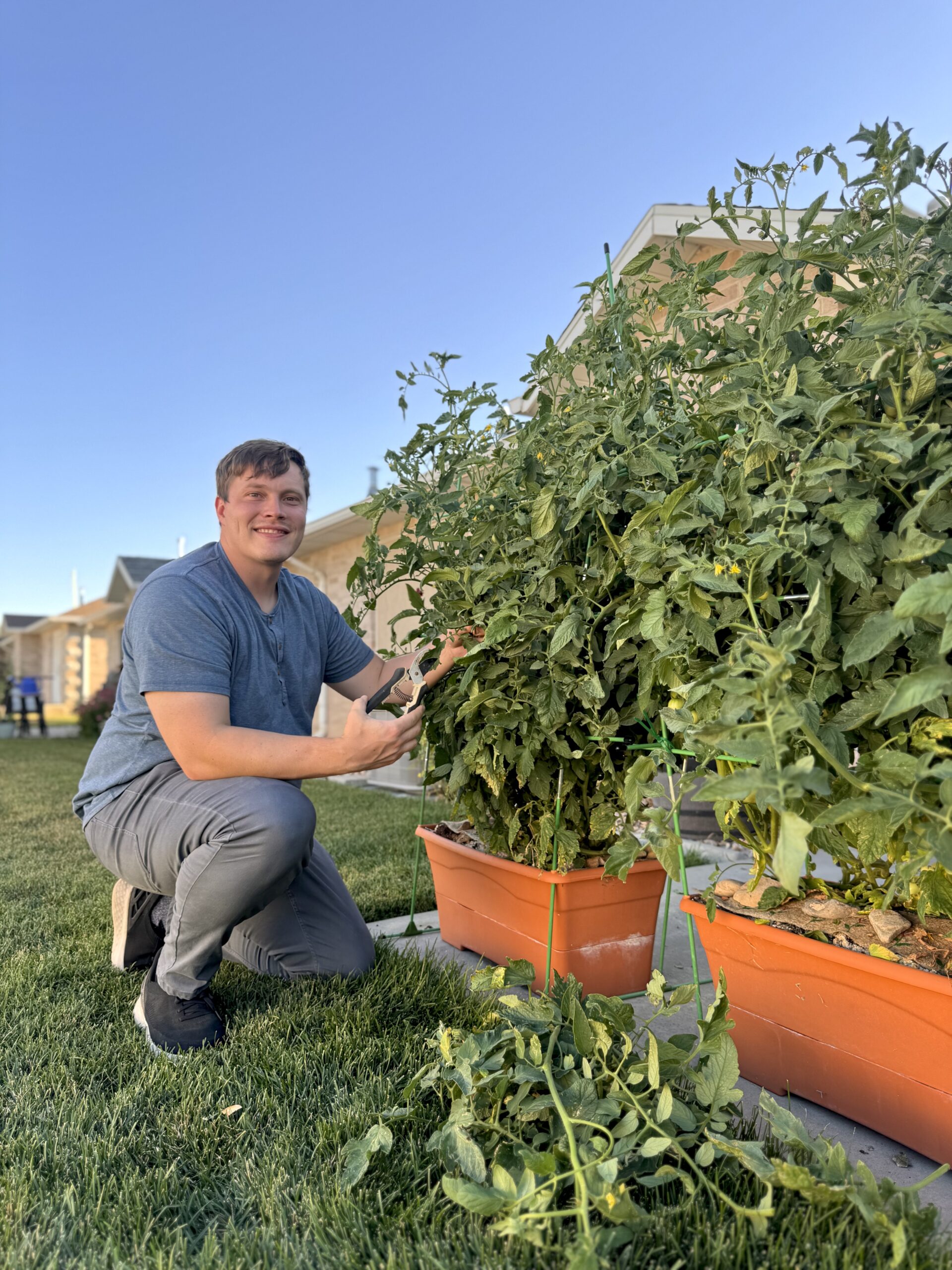
The 3 Garden Containers I Recommend
1. Raised Steel Beds
I have two galvanized steel raised beds in my 250 square foot townhouse backyard, and am completely satisfied with my purchase.
When I was looking for wooden raised bed options, I was surprised by how pricey they were – largely due to the spike in lumber costs in 2022. Wood is a popular choice for raised beds, but it can take more time to assemble, and be more difficult, especially if you’re building it yourself.
That’s when I looked into other raised bed options and found these steel ones. The main reason I landed on them is because they are extremely durable (they can last 2-3x as long as wood), and I think they look sleek.

Listed below are the pros and cons of raised steel beds (although despite its cons, I’m obviously still a huge fan of them):
PROS:
- Does not rot like wood
- Can last upwards of 30 years
- Looks sleeker than a basic wooden bed
- Can come in taller sizes, which are better for your back!
- Tall garden beds are great for retaining moisture, allowing for deeper, less frequent watering
CONS:
- More expensive than building your own wooden bed
- If you buy the tall size, you will need a lot of dirt to fill it, which is an additional cost. Note that if you have access to a lot of fallen wood or leaves, you can throw those in the bottom half of these containers (just make sure there are no chemicals sprayed on any organic material that you use). In my case, I bought some cheap hay bales to throw in.
- May be slightly more work to install than your most basic pre-assembled wooden bed
- Not portable
2. Garden Patch Grow Boxes
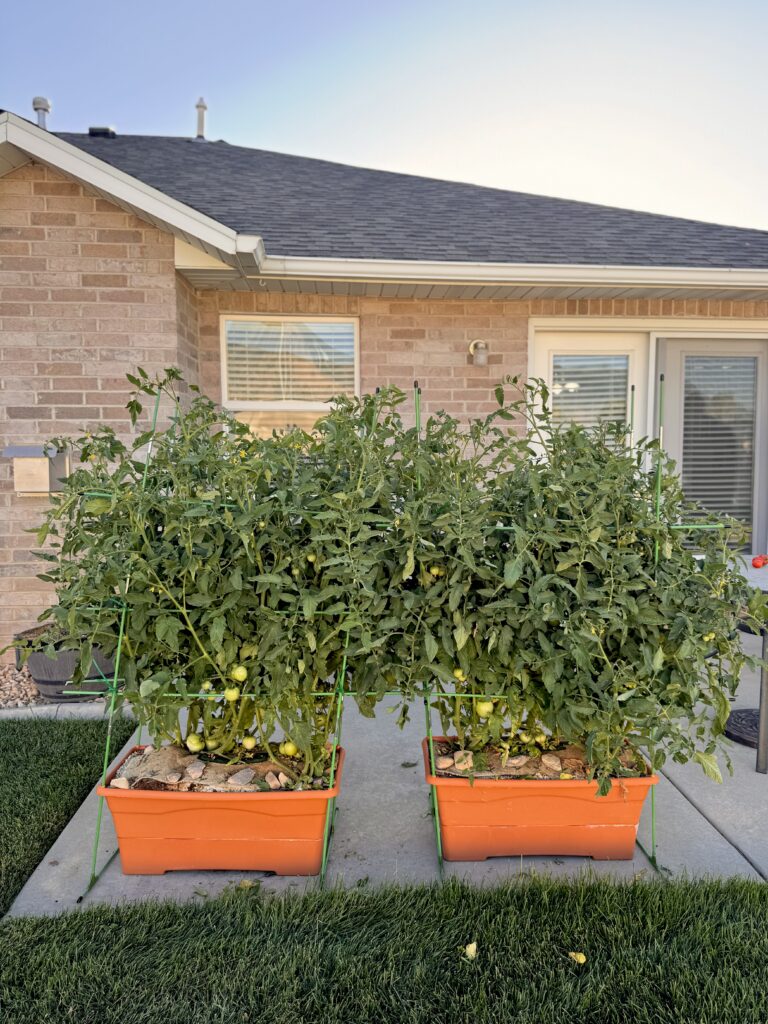
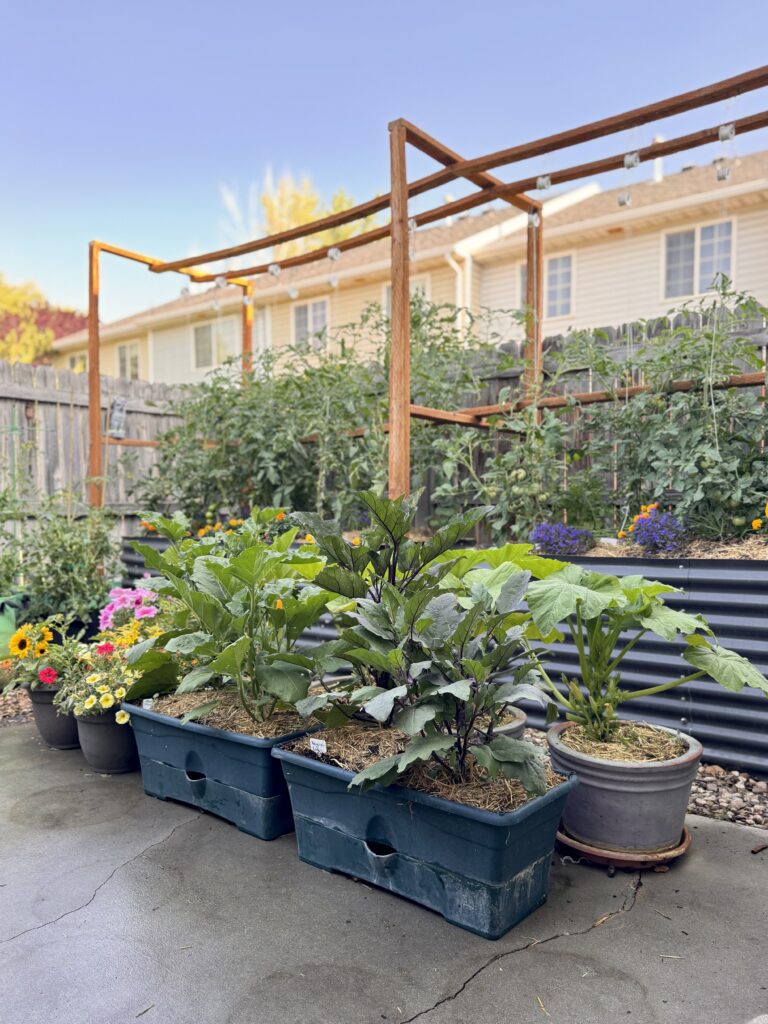
*Disclaimer: It looks like Garden Patch isn’t selling their grow boxes until Spring. However, the Earth Box is a similar alternative (I’ve never actually used it, but they’re similar).
I could go on-and-on all day about how much I love the Garden Patch Grow Box. Growing up, my parents always used them, having learned about them from their own parents. Eventually, the idea to use them was passed down to me as well.
Over the years, I’ve recommended them to many of my friends, and have even bought them as gifts. I love them so much because of their approachability, low cost, and incredible results. I personally have 10, but 1-3 would be ideal for a new gardener! The Garden Patch Grow Box is my overall recommendation for new gardeners!
This is my top recommendation for new gardeners because it offers quick, reliable success without overwhelming you. It helps build confidence and keeps you excited to garden again in future seasons.
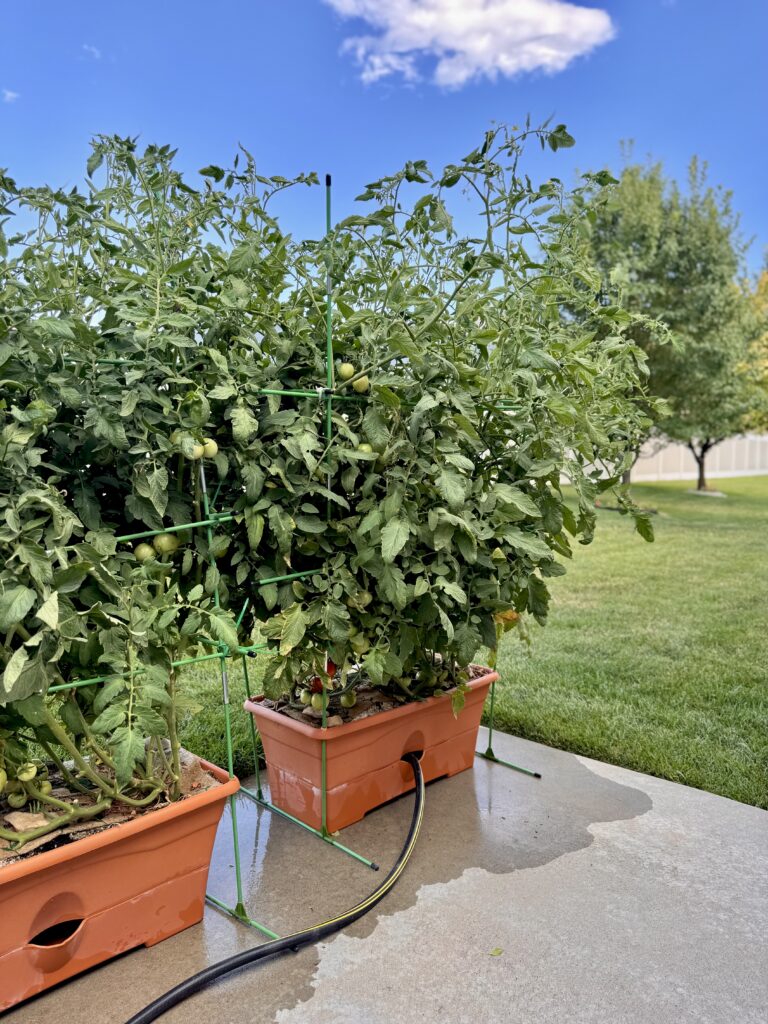
PROS:
- Inexpensive compared to other raised bed alternatives
- Great for maximizing smaller spaces
- Can be placed on top of concrete
- More portable
- Built-in 4-gallon water tank (this aids in under- or over-watering)
- Comes with a mulch covering, thus. you don’t need to weed or fertilize
- Easy install
CONS:
- Less durable than a steel raised bed
- Not as pretty looking
- Potential for standing water if no plants are growing and drinking from water tank
3. Grow Bags
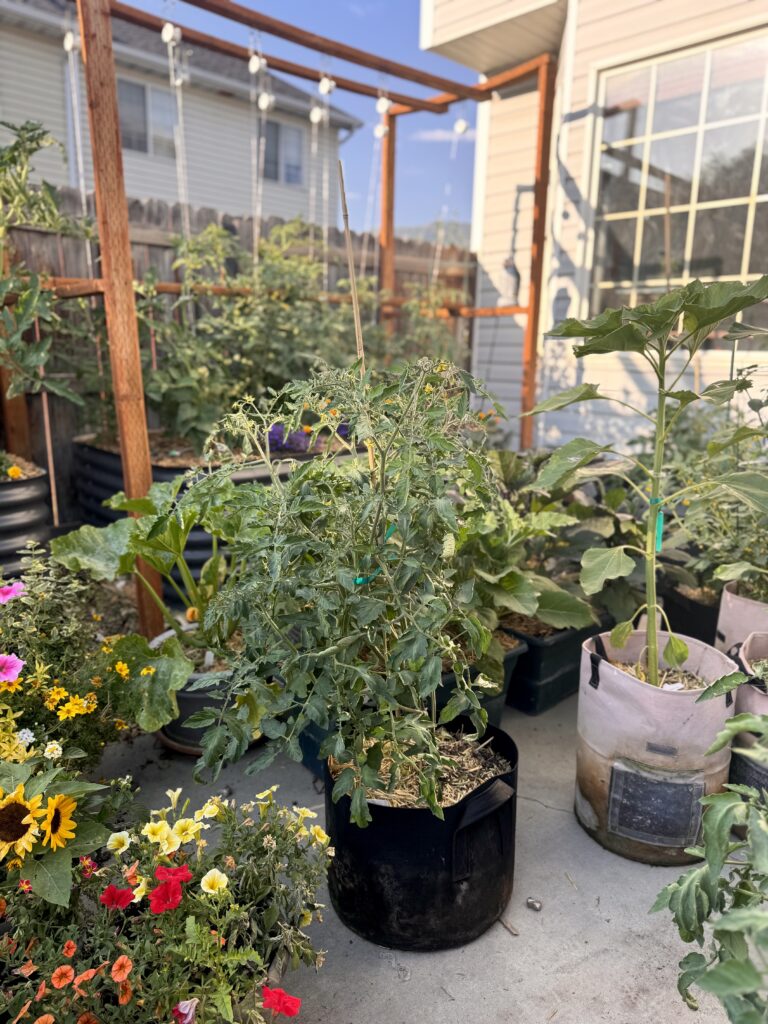
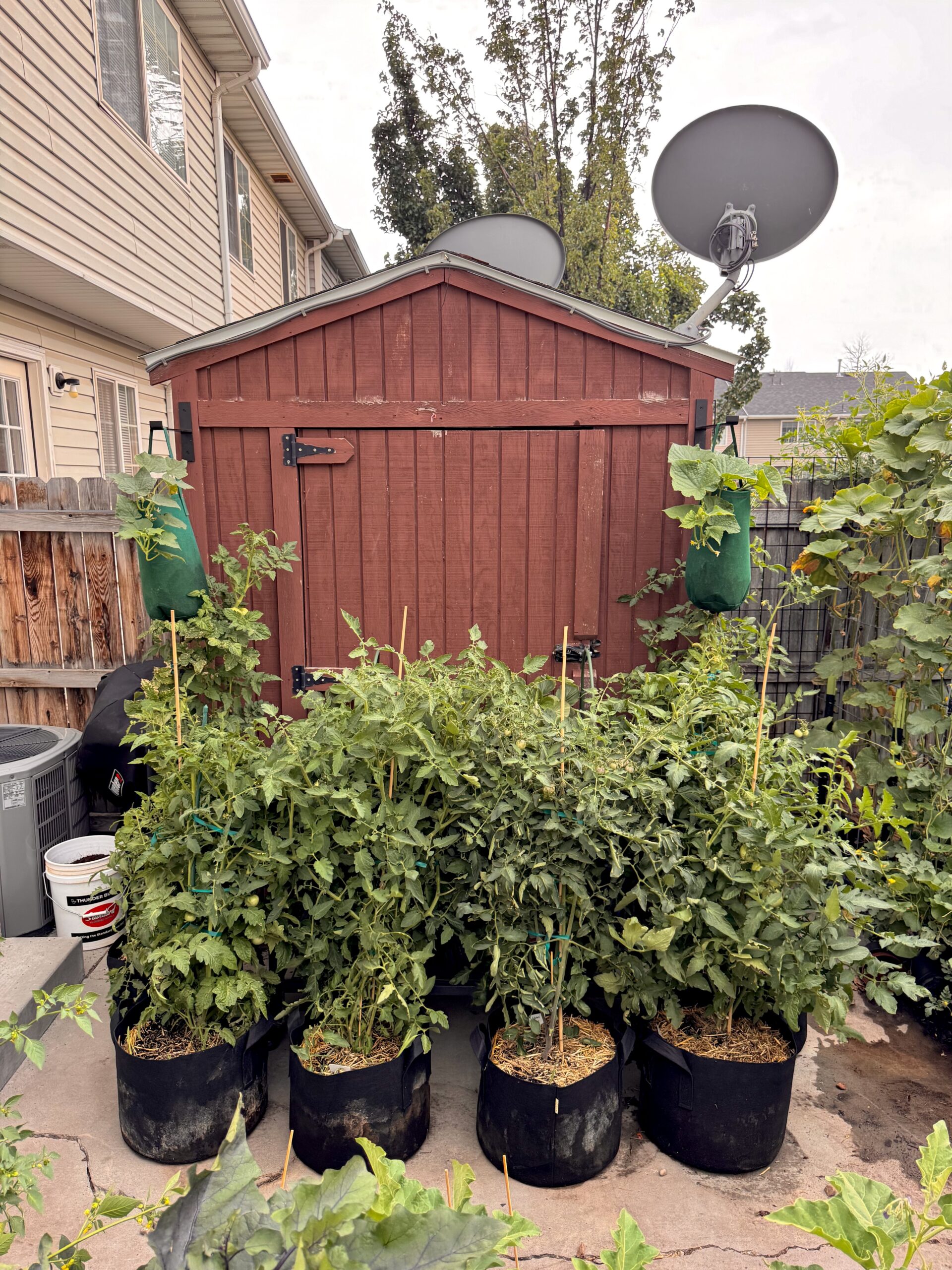
Finally, I use fabric grow bags in my garden frequently. They are another good option, but lesser than the previous two options in my opinion. Fabric grow bags are a lightweight, affordable alternative to traditional garden beds or pots. Made from breathable material, they promote healthy root growth by allowing air pruning and better drainage, which helps prevent overwatering.
They’re also portable and great for small spaces, patios, or renters who can’t dig into the ground.
PROS:
- Extremely inexpensive
- Very portable
CONS:
- Less durable and long-lasting
- Does not retain water and nutrients as well because of its porous material
Thanks for reading along, guys! If you enjoyed this blog post, check out my other gardening blog posts:
- How to Start a Garden on a Budget for Under $100
- Essential and Nice-to-Have Garden Products for Your Perfect Setup
- Understanding Garden Light and Shade: A Simple Guide
- How to Build a Homemade Trellis Using Cattle Panel
Follow me on social media for daily content and instructional videos about gardening!
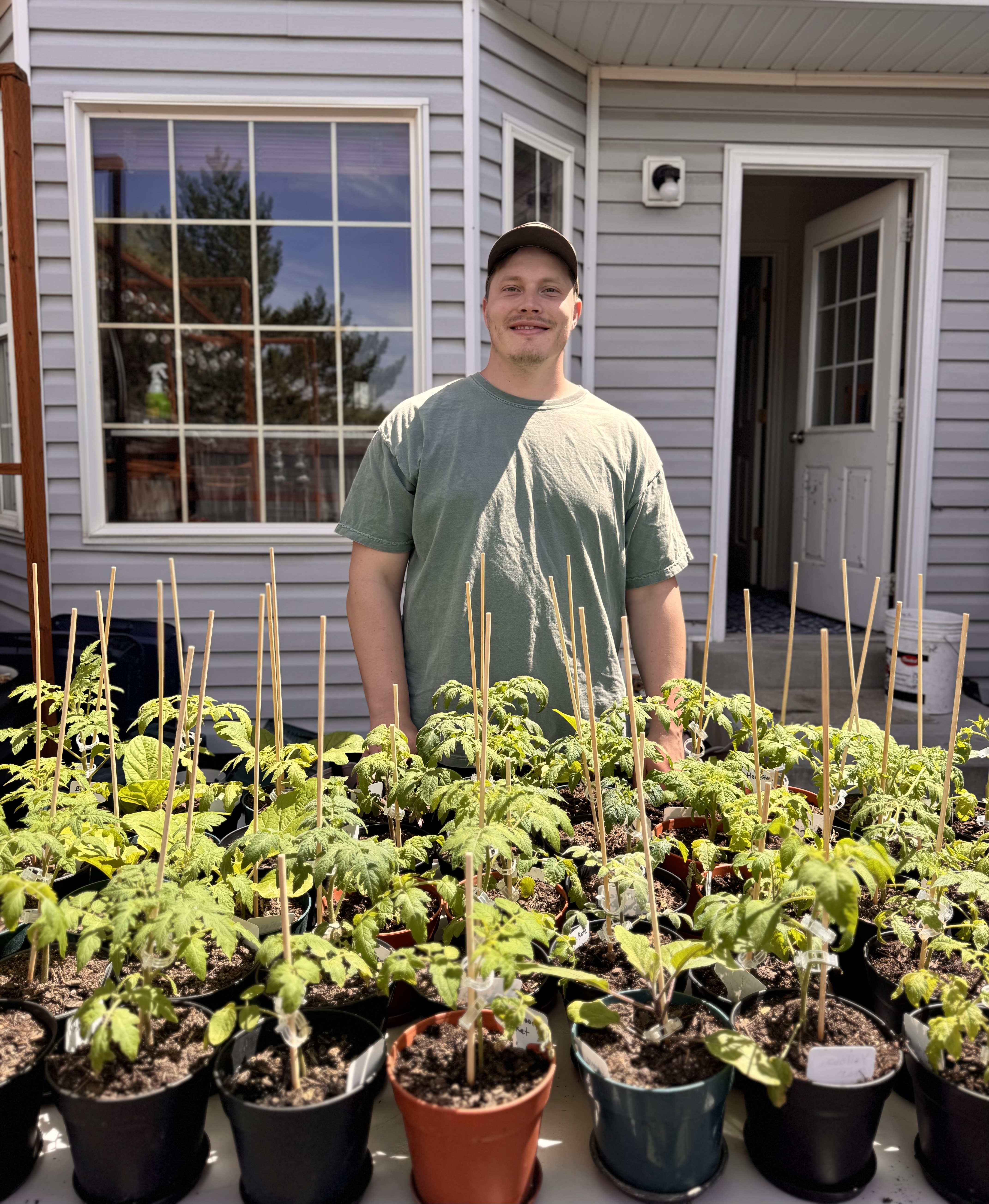

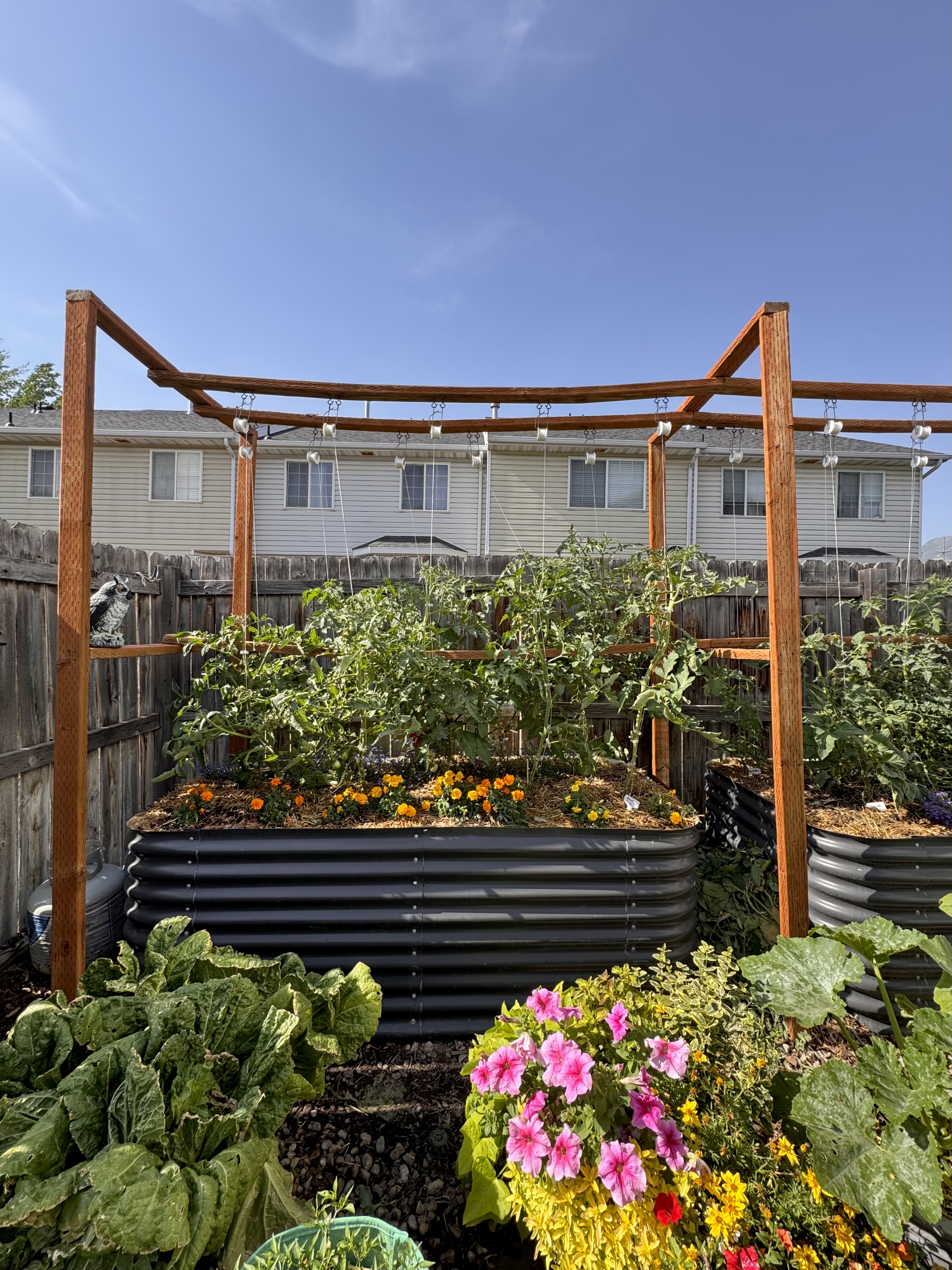
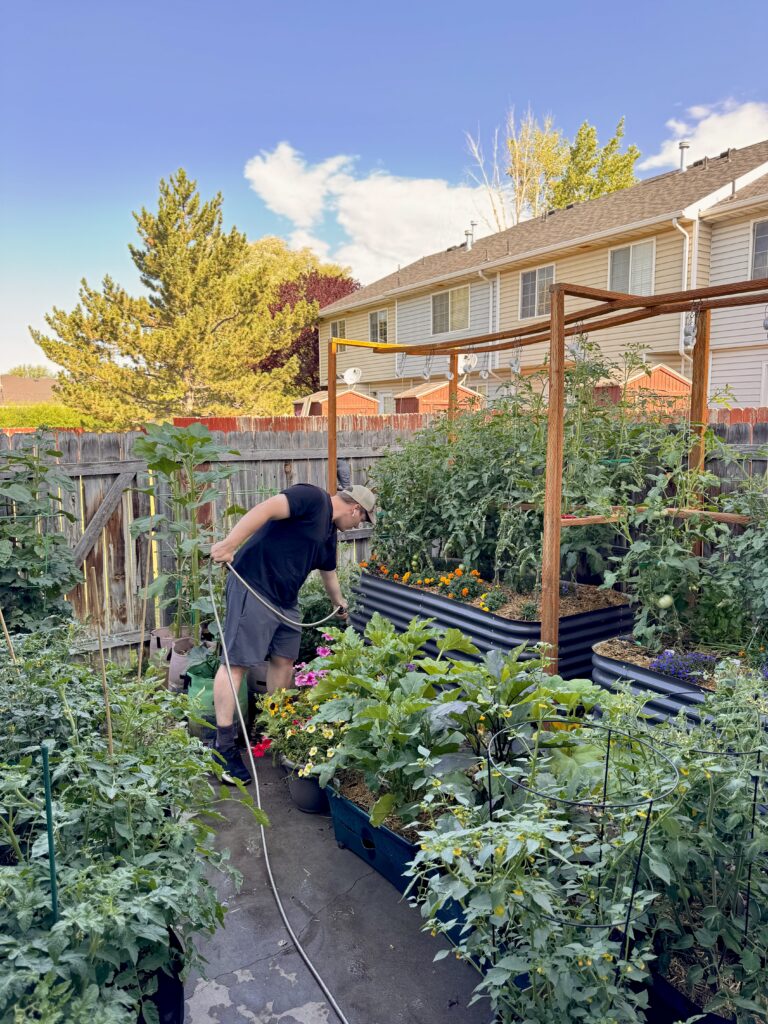




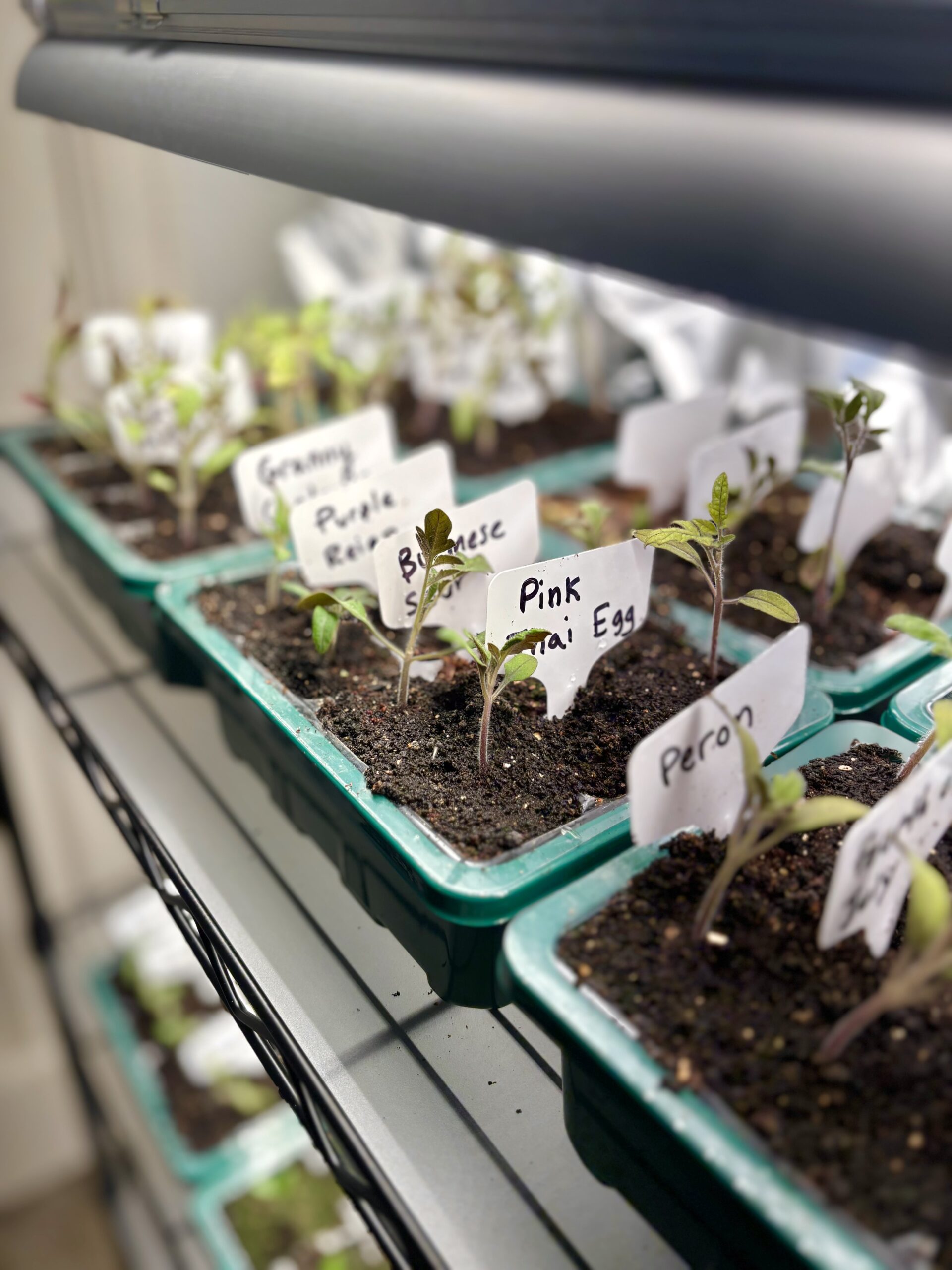
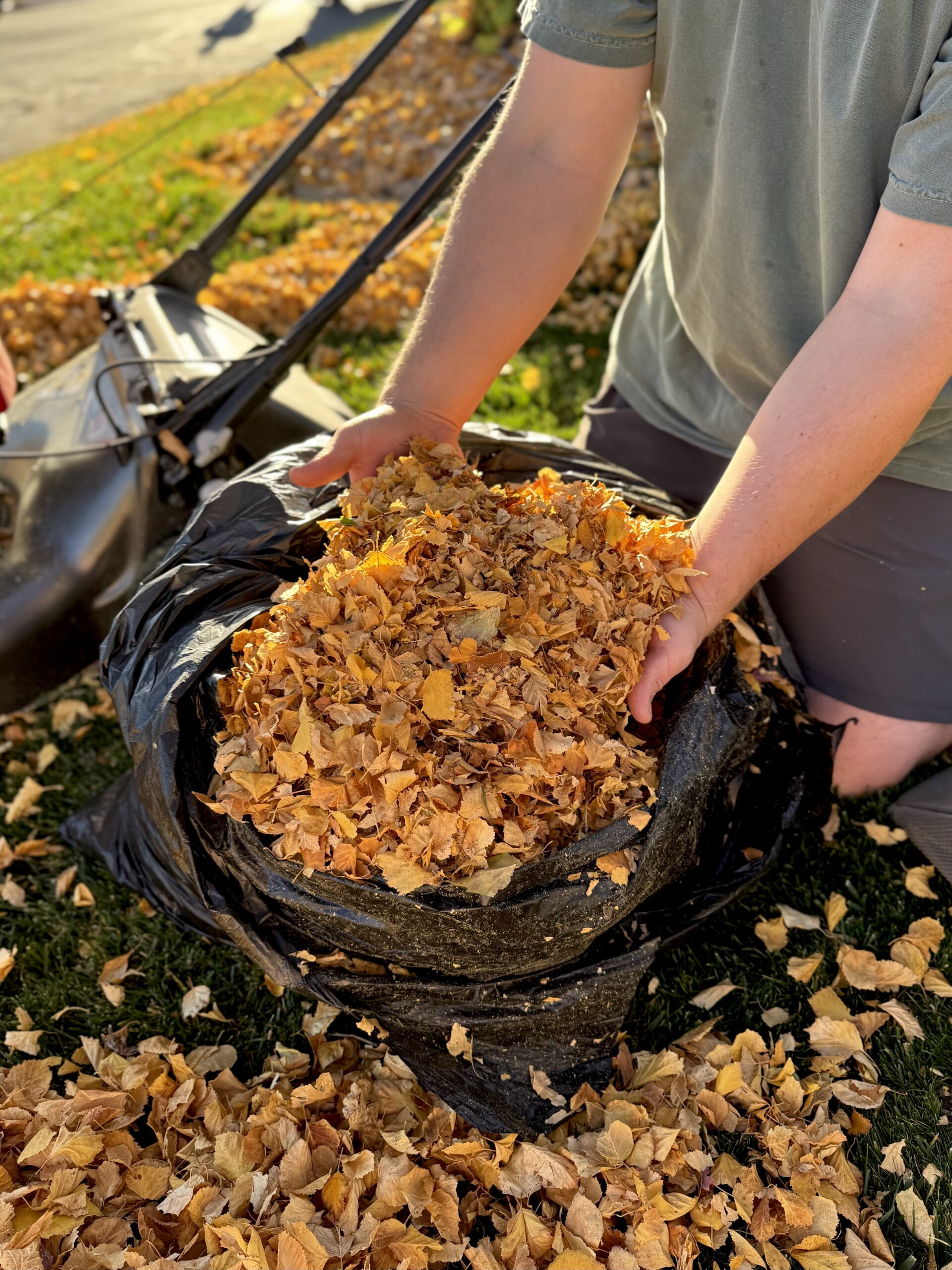
Do you have recommendations on where to purchase? I’m starting over b/c my trees have gotten too big to give enough sunlight to my former garden.
What containers are you interested in? We’d be happy to give you recommendations on where to purchase! It would depend on which one you want.
I’m using similar containers but will try some that I haven’t tried yet.
Awesome! Best of luck, Tom.
I have dabbled at gardening for years choosing flowers over vegetables you posts have moved me in vegetable direction. Can’t wait to get started. Would you share your general location as comparison!
I’m in Northern Wyoming ?❤️
So excited for you! Yep! We live in Utah, zone 7a! Best of luck this season!
I also live in Utah. What time of year do you start to plant the plants?
Sorry we missed your comment! We usually don’t plant outdoors until around mothers day! And if we start any plants indoors we start them about 4-6 weeks before that typically.
Have you figured out a way to help keep grow bags from drying out?
That’s a great question! The best thing we have found is using grow bags that are at least 10 gallons, filling them with soil that retains water well, and then mulching on top
Can you please publish the details on the trellis? Thanks.
Absolutely! That is coming in the next couple weeks. I actually built it myself, but I will publish details soon. Stay tuned! – Jeff
Thanks. My Son bought me a Galvanized raised garden bed with a Greenhouse Tent (due to birds and squirrels) so I’m excited to get one going. Looking forward to following for more tips and suggestions.
That so amazing Frances! We wish you the best of luck. Hope you have a thriving garden by now 🙂
I’m very interested in the grow boxes! Do you suggest planting only one type of vegetable or fruit in each, or mix them up?
Also, where do you purchase them?
I love the portability of these boxes.
Thanks for your insight.
Sorry for the slow reply Donna! We missed your question. Hopefully you were able to find the grow boxes. They are sold by a company called garden patch. We have always planted similar varieties of vegetables in the same box to make things easier, but you don’t have to. You can definitely mix it up and plant however you’d like
Thank you for sharing! I am starting out my own vegetable garden and will adopt these strategies! Great job! May you continue to have abundant yields from your garden!
Thanks so much! Best of luck this year!
The grow boxes are right up my alley! Definitely going to try those out!
Thank you so much for all this great information. I live in a 10b zone (coastal plain). I’m wondering whether the metal containers would be too hot since temperatures easily reach over 30°C in the summer. I like the idea of the grow boxes. I have to check whether they’re available locally. Which do you think would be better?
Hi Trish! I’m glad you found the information helpful! In my experience the metal beds have no issues in the hot sun. My whole summer is over 30 degrees Celsius for example. I think part of the reason I haven’t had problems is I have deep raised beds and I mulch the top so the soil is cooler than the surface temperature by quite a bit. I think metal containers are great because of how long they last if you plant to stay where you’re at for many years.
It is sweet with wood how you can screw on attachments! I saw you did that recently with a new trellis you built
This is so detailed and helpful. Thank you.